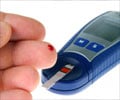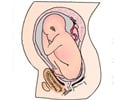Women with low body mass index and low glucose challenge test (GCT) were associated with smaller babies.
- Glucose levels in pregnancy can affect the baby. Women with high blood sugar often deliver large babies
- The glucose challenge test is commonly used to detect blood sugar levels between 24 and 28 weeks of pregnancy
- Researchers found a relation between low blood glucose levels in underweight pregnant women and small for gestational age babies
For the glucose challenge test, women are given to drink a solution that contains 50mg or 75mg glucose. A blood sample is obtained one hour later. Women whose blood glucose levels are above normal have to undergo another test called the glucose tolerance test (GTT) to accurately determine the presence of gestational diabetes or type 2 diabetes. Sometimes, instead of calling the patient twice, doctors do a single 2-hour glucose tolerance test. In this test, the patient is given a drink containing 75mg glucose to have in a fasting state. Blood tests are obtained before glucose intake and hourly for two hours thereafter.
Researchers are focusing on women who have low glucose challenge test results during pregnancy. It is possible that these women have increased insulin sensitivity. Insulin is the hormone that controls blood glucose levels. The increased insulin sensitivity can cause low glucose levels in the mother as well as the baby, which can affect fetal growth
In a study conducted in Japan, researchers studied the association between pre-pregnancy BMI of the mother and GCT done between 24 and 28 weeks of pregnancy with small for gestation age babies.
The data for the study was obtained from hospital records of 1860 women. The glucose challenge test in these women was carried out between 24 and 28 weeks of gestation with 50 g glucose. Patients with GCT of less than or equal to 90 mg/dL were considered to have a low GCT, while those with a GCT of between 91 and 139 mg/dL were grouped into the non-low-GCT group. Women with a higher GCT were excluded from the study.
The researchers found that:
- Around a fifth of the women included in the study i.e. 20.4 percent were underweight
- SGA was more common in the low-GCT group than in the non-low-GCT group (15.5% vs 10.5%)
- When the pre-pregnancy BMI was considered, low GCT was associated with SGA babies in the underweight group. This association was not noted in the normal BMI and obese groups.
- The researchers did not consider factors like maternal smoking, presence of kidney disease and inflammatory bowel disease, which could have also caused SGA.
- The insulin sensitivity was not measured during the study. The GCT may have been affected by other conditions like age and body weight of the patient, environment, change in life partner and situation in which the meal was consumed.
- Shinohara S, Uchida Y, Hirai M, Hirata S, Suzuki K. Relationship between maternal hypoglycaemia and small-for-gestational-age infants according to maternal weight status: a retrospective cohort study in two hospitals BMJ Open 2016;6:e013749 doi:10.1136/bmjopen-2016-013749
















